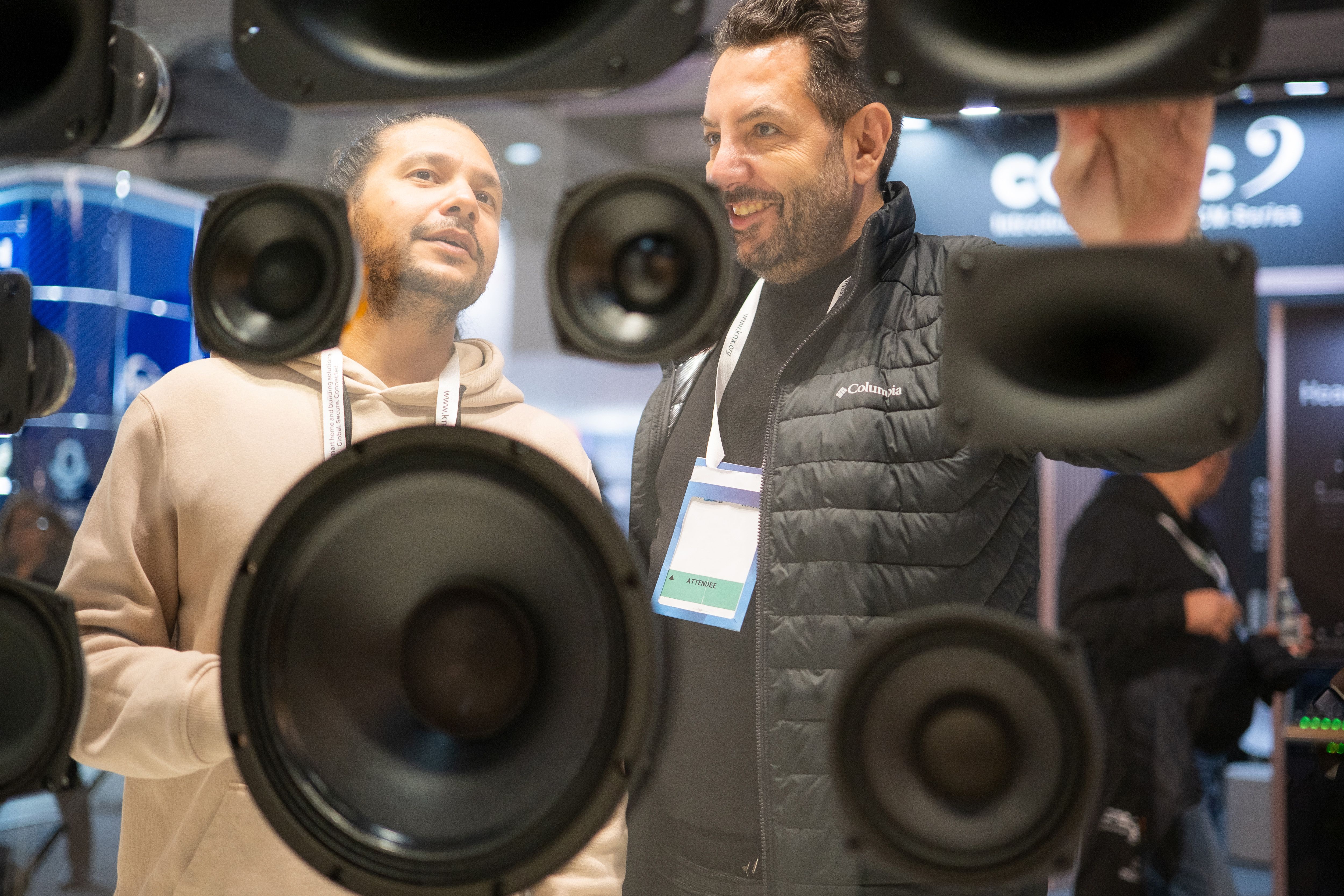Today's audio tech trends are about bringing us together

But that’s exactly what sound is; sound is not a two-dimensional construct. It completely envelops and wraps us up in it. When electronic music legend Jean-Michel Jarre made an appearance at ISE in 2023 he described it as allowing your ears to open your eyes.
“We have a two-dimensional relationship with recorded sound, but stereo doesn’t exist in nature,” he said. “It is the environment which creates perspective, and technology now allows us to create music like we experience sound in our everyday life. You forget you are inside the music. The experience has a magical and poetic aspect to it.”

Across the AV world it feels like there has been a shift in how we treat audio and what we expect from it. Whether at a live event, or an art installation, a concert, a product launch or a remote business meeting, audio is providing all the added value and we’re at a point where delivery finally matches the ambitions of technology developers.
It's got nothing to do with volume, but it has everything to do with control and management, and object-based audio (OBA) is the key to it all. OBA treats every individual audio component as an independent object rather than mixing them together for presentation. It allows objects like a microphone or a drumkit, a voice or a soundtrack, to be placed very precisely in a 3D environment and completely isolated in that space.
Since their introduction in 2023, multiple audio companies have used ISE’s audio demo rooms to expose visitors to the creative possibilities that OBA delivers, intimately connecting them to the content in new and creative ways. Technologies like 3D audio-beamforming can create independent soundfields in a 3D environment as well as controlling the acoustic signature of the space by reducing the levels of acoustic energy hitting reflective surfaces. Beamforming not only minimises spill between different physical areas, but it provides total control of all of this from one central location.
It gives sound designers the ability to control what we hear in public spaces and where we hear it, and the good news is that we already understand all this.
We’ve already been enjoying it, often without even realising. Commercially available 3D soundbars and Sky Glass bring Dolby Atmos into our homes by bouncing audio objects off our ceilings and walls, and thousands of immersive content titles are being streamed every day across a variety of popular streaming platforms. These can be streamed in full 3D audio, or binauralised as two-channel immersive mixes to enjoy on wireless earpods.
The same can be said for content production. More classical music is delivered with an immersive mix as standard, presenting audio objects within a Dolby Atmos 3D soundfield, adding value and helping meet our basic human need for connection, whether that is to each other or to the content.
For the last few years, audio technology ISE has been all about creating deeper audio experiences. It’s always good to feel like we’re part of something bigger, and audio has the power to connect us in way that even video can't do.

)
)
)
)
)
)
)
)
)
)

)
)
)
)
)
)
)
)
)
.png/fit-in/500x500/filters:no_upscale())
)
)
)
)
.png/fit-in/500x500/filters:no_upscale())
)
)
)
)
)
)
)
)
)
)
)
)
)
)
)
)
)
)
)
)
)
)
)
)
)
)
)
)
)
)
)
)
)
)
)
)
)
)
)

)
)
)
)
)